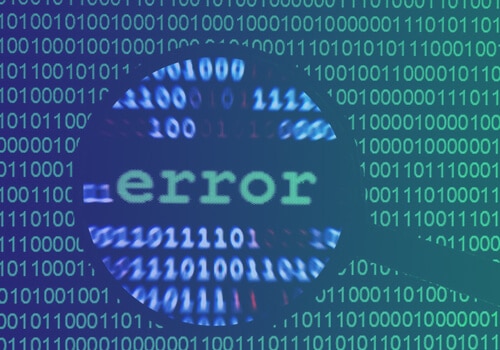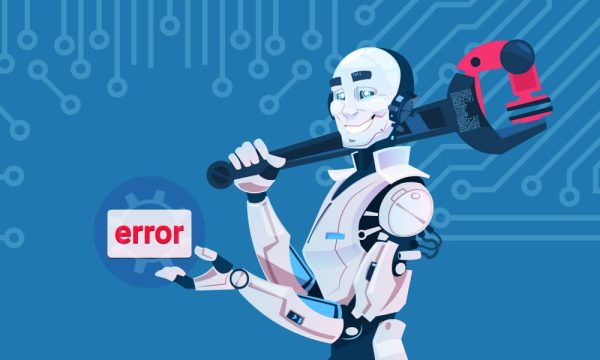Like software development that works on a code, developing working artificial intelligence and machine learning models requires high-quality data. The models require accurately labeled and annotated data at multiple stages of production as the algorithm needs to be continuously trained to undertake tasks.
But, quality data is hard to come by. Sometimes, the datasets could be filled with errors that could impact the project outcome. Data science experts would be the first to tell you that they spend more time cleaning and scrubbing the data than evaluating and analyzing them.
Why are errors present in the dataset in the first place?
Why is it essential to have accurate training datasets?
What are the types of AI training data errors? And, how to avoid them?
Let’s get started with some statistics.
A group of researchers at the MIT Computer Science and Artificial Intelligence Lab scrutinized ten large datasets that have been cited more than 100,000 times. The researchers found that the average error rate was approximately 3.4% across all the analyzed datasets. It was also found that the datasets suffered from various types of errors, such as mislabeling of images, audio, and text sentiments.
Why are errors present in the dataset in the first place?

For example, imagine asking your office assistant to collect complete details about all your location businesses and manually enter them into a spreadsheet. At one point or the other, an error will occur. The address could go wrong, duplication might occur, or data mismatch could happen.
Errors in data could also happen if collected by sensors because of equipment failure, sensor deterioration, or repair.
Why is it essential to have accurate training datasets?
All machine learning algorithms learn from the data you provide. Labeled and annotated data helps the models find relations, understand concepts, make decisions and evaluate their performance. It is essential to train your Machine learning model on error-free datasets without worrying about the costs associated or the time needed for training. As in the long run, the time you spend on acquiring quality data will enhance the outcome of your AI projects.
Training your models on accurate data will allow your models to make accurate predictions and boost model performance. The quality, quantity, and algorithms used determine the success of your AI project.
What are the types of AI training data errors?

Labeling Errors, Unreliable Data, Unbalanced Data, Data Bias
We will look at the four most common training data errors and ways to avoid them.
Labeling Errors
Labeling errors are among the most common errors found in training data. If the model’s test data has mislabeled datasets, the resultant solution will not be helpful. Data scientists would not draw accurate or meaningful conclusions about the model’s performance or quality.
Labeling errors come in various forms. We are using a simple example to further the point. If the data annotators have a simple task of drawing bounding boxes around each cat in images, the following types of labeling errors might likely occur.
- Inaccurate Fit: Model overfitting happens when the bounding boxes are not drawn as close to the object (cat), leaving several gaps around the intended thing.
- Missing Labels: In this case, the annotator might miss labeling a cat in the images.
- Instruction Misinterpretation: The instructions provided to the annotators are not clear. Instead of placing one bounding box around each cat in the images, the annotators place one bounding box encompassing all the cats.
- Occlusion Handling: Instead of placing a bounding box around the visible part of the cat, the annotator places bounding boxes around the expected shape of a partially visible cat.
Unstructured and unreliable data
The scope of an ML project depends on the type of dataset it is trained on. Businesses should use their resources to acquire datasets that are updated, reliable, and representative of the needed outcome.
When you train the model on data that is not updated, it can cause long-term limitations in the application. If you train your models on unstable and unusable data, it will reflect the usefulness of the AI model.
Unbalanced Data
Any data imbalance could cause biases in your model’s performance. When building high-performance or complex models, the training data composition should be carefully considered. Data imbalance can be of two types:
- Class Imbalance: Class imbalance occurs when the training data has highly imbalanced class distributions. In other words, there is no representative dataset. When there are class imbalances in the datasets, it can cause many issues when building with real-world applications.
For example, if the algorithm is being trained to recognize cats, the training data only has images of cats on walls. Then the model will perform well when identifying cats on walls but will do poorly under different conditions. - Data Recency: No model is entirely up-to-date. All models undergo a degeneration, as the real-world environment is constantly transforming. If the model is not updated regularly on these environmental changes, its usefulness and value are likely diminished.
For example, until recently, a cursory search for the term Sputnik could have thrown up results about the Russian carrier rocket. However, post-pandemic search results would be completely different and filled with the Russian Covid vaccine.
Bias in Labeling Data
Bias in training data is a topic that keeps cropping up now and then. Data bias could be induced during the labeling process or by annotators. Data bias can occur when using a sizable heterogeneous team of annotators or when a specific context is required for labeling.
Reducing bias is possible when you have annotators from around the world or region-specific annotators perform the tasks. If you are using datasets from around the world, there is a high possibility that the annotators make mistakes in labeling.
For example, if you are working with various cuisines from around the world, an annotator in the UK might not be familiar with the food preferences of Asians. The resulting dataset would have a bias in favor of the English.
How to Avoid AI Training Data Errors?
The best way to avoid training data errors is to implement strict quality control checks at every stage of the labeling process.
You can avoid data labeling errors by providing clear and precise instructions to the annotators. It can ensure uniformity and accuracy of the dataset.
To avoid imbalances in datasets, procure recent, updated, and representative datasets. Ensure that the datasets are new and unused before training and testing ML models.
A powerful AI project thrives on fresh, unbiased, and reliable training data to perform at its best. It is crucial to put in various quality checks and measures at every labeling and testing stage. Training errors can become a significant issue if they are not identified and rectified before impacting the project’s outcome.
The best way to ensure quality AI training datasets for your ML-based project is to hire a diverse group of annotators who have the required domain knowledge and experience for the project.
You can achieve quick success with the team of experienced annotators at Shaip who provide intelligent labeling and annotation services to diverse AI-based projects. Give us a call, and ensure quality and performance in your AI projects.







